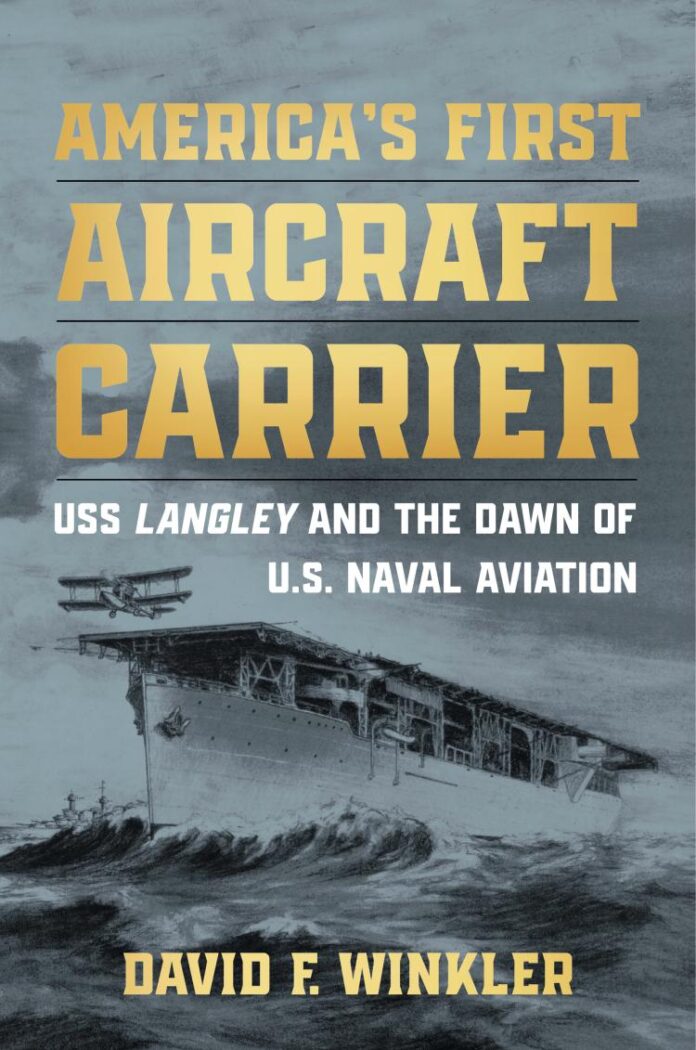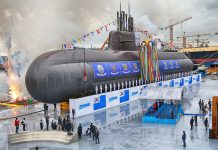
America’s first aircraft carrier. USS Langley and the Dawn of US Naval Aviation. By David F. Winkler. Naval Institute Press, Annapolis, 2024. ISBN 978-1-68247-501-0
Reviewed by David Hobbs
David Winkler is an adjunct professor with the US Naval War College Department of Distant Education. He served as a surface warfare officer in the USN for twenty-eight years, retiring with the rank of commander, and on leaving the Navy he became a staff historian with the Naval Historical Foundation.
Since then he has held successive chairs at the US Naval Academy and the Smithsonian Air and Space Museum. He conducted much of the background research for this book whilst serving as the Charles Lindbergh Chair of Aerospace History at the latter institution.
HMS Argus had preceded Langley by four years to become the world’s first true aircraft carrier capable of both launching and recovering aircraft onto a flight deck that covered the full length of the ship. However, the development of carrier aviation in the Royal Navy was initially crippled by the political decision to create an independent air force that proved to have little interest in either naval warfare or seeking the most effective way to operate aircraft at sea. Although the RN had operational control of embarked aircraft, it was the RAF that provided them and it opposed every attempt to increase the number embarked or to streamline their methods of launch and recovery. The USN had no such impediment and a series of dynamic officers used Langley as a test-bed to produce aspects of carrier operation that are still very much in evidence in twenty-first century navies. Effective transverse arrester wires, catapults, barriers to protect aircraft in a deck park and even the coloured surcoats that indicate the specialisations of aircraft marshallers, handlers, mechanics, ordnance ratings and others were all developed in Langley. Deck parks might not seem important to anyone unfamiliar with carrier operations but the concept of creating and managing them to increase the number of aircraft a carrier could operate was pioneered by men serving in Langley. At first she was simply a trials ship, then a ‘school’ for studying the aviation aspects of fleet problems and finally she became an operational carrier. Many pilots made their first deck landings on her during the 1920s and early 1930s.
In addition to describing her life as a carrier, Winkler describes the ship’s first incarnation as the collier Jupiter and her service during the First World War before explaining the background to her conversion and the early arguments about the role of aviation within the USN. Joseph M Reeves, known in the USN as ‘the Bull’, had been the first captain of Jupiterbefore becoming an aviator and he was to be the driving force behind her development from experiment to operational capability. Quite rightly there is a full chapter devoted to him but every one of the ship’s commanding and executive officers is described and many of the aviators who went on to become well-known leaders in World War Two have descriptive ‘pen pictures’ which add human interest to the chronological description of the ship’s activities. Winkler also gives insight into the wider organisation of the USN in the period between the two world wars. Passages through the Panama Canal to participate in fleet problems, or exercises, are described and put into context, as are the ship’s base ports which included Norfolk, San Diego and Pearl Harbor at various times. The ship underwent constant changes, not least the wooden structure right aft under the flight deck was originally built as a loft for carrier pigeons; refurbished as a cabin for the XO when his original cabin was taken over by the admiral’s staff and finally became a dormitory for junior aircrew. Fascinating details about day-to-day life on board are included in the text. How many people outside the USA know, for instance, that a diet of bread and water was considered a punishment suitable for leave-breaking offences in the 1920s or that such measures were only formally deleted from USN Regulations in 2019?
In summary this is a very readable and well-illustrated book that gives insight into one of the USN’s most important and historic warships from its construction and conversion to its final loss, sunk by Japanese naval aircraft in the desperate fighting off Java in February 1942. It adds fascinating detail to the historiography of naval aviation and I thoroughly recommend it.



